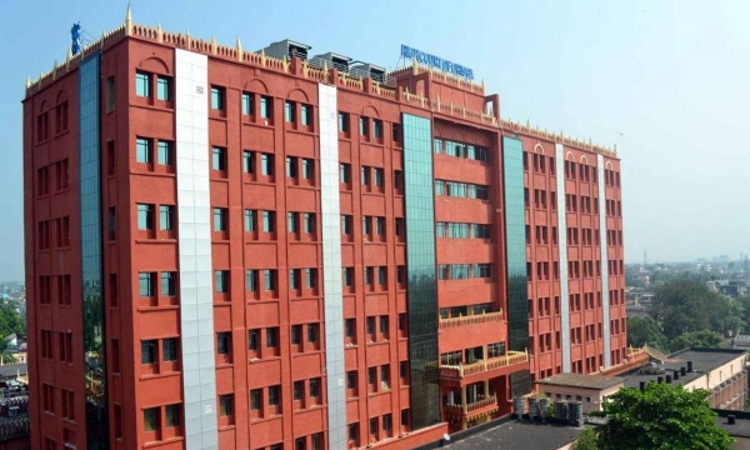- Home
- /
- High Courts
- /
- Orissa High Court
- /
- Time Of Death In Post-Mortem Report...
Time Of Death In Post-Mortem Report Can't Be Applied With 'Mathematical Precision': Orissa HC Acquits Man Booked For Murder Of Wife & New Born
LIVELAW NEWS NETWORK
17 Jan 2024 1:10 PM IST
The Orissa High Court has acquitted a man convicted by the trial Court for committing murder of his wife and new-born female baby and throwing their dead bodies inside a well in the year 1998.While giving benefit of doubt to the appellant, the Division Bench of Justice Sangam Kumar Sahoo and Justice Sanjay Kumar Mishra observed –“Though this Court has a bounden duty to render justice to...
The Orissa High Court has acquitted a man convicted by the trial Court for committing murder of his wife and new-born female baby and throwing their dead bodies inside a well in the year 1998.
While giving benefit of doubt to the appellant, the Division Bench of Justice Sangam Kumar Sahoo and Justice Sanjay Kumar Mishra observed –
“Though this Court has a bounden duty to render justice to those two innocent departed souls, but at the same time, the hands of justice are tied with the threads of strict procedures and proof that are needed to be followed while recording a conviction against a person. As long as someone's innocence is not completely ruled out by way of established facts and evidence, this Court has no option but to be loath to put him behind the bars.”
Brief Background
As per the prosecution, the appellant impregnated the deceased and later married her at the directions of village panchayat. Subsequently, they left for appellant's village but when the deceased's mother visited appellant's village, she could not find her daughter. Subsequently, mother of the deceased was informed that dead bodies of a woman and a new born were floating inside a well. On suspicion, she along with others brought out the bodies and she could recognize the deceased.
An FIR was registered and investigation was carried out. Upon completion of the investigation, charge-sheet was filed against the appellant. The trial Court found him guilty under Sections 302, 315 and 201 of the IPC and sentenced him to imprisonment for life.
Court's Observation
While hearing the appeal, the Court went through the opinion of the post-mortem doctor who opined that the injuries on the chest and neck of the deceased were ante-mortem in nature which could have been caused by pressure over the chest and the side of the neck which might have led to asphyxia and death.
Similarly the doctor opined that on account of decomposition after the death of the deceased lady, the female child might have been expelled out of the uterus. Thus, the Court was satisfied that the death of both the deceased was homicidal in nature.
The Bench then delved to examine the relevance of 'last seen theory' in the instant case. It noted that the mother of the deceased went to see off both the appellant and the deceased to the bus-stop when they were leaving for the appellant's village. However, the Court noted, it was not forthcoming from the evidence that the deceased made any communication with her mother or brother to inform that she was residing with the appellant under one roof.
The dead bodies were recovered thirteen days after the couple left for the appellant's village. The post-mortem examination, which was conducted three days after the dead bodies were recovered, revealed that the death of the death happened nearly 12-14 days before the time of post-mortem examination.
The Court, however, said that the approximate time of death as indicated in the post-mortem report cannot be applied as something of 'mathematical precision'.
“The Investigating Agencies and the Judiciary should be made aware of the fallacy that the exact time of death cannot be fixed by any method, but only an approximate range of death can be given, that too will have considerable biological variations in individual cases,” it added.
Thus, the Court was of the view that in absence of any other evidence, the post-mortem report finding regarding time of death of the deceased cannot be a conclusive factor to hold that the death took place twelve to fourteen days before the post-mortem examination.
“…therefore, in our humble view, the prosecution has not succeeded in establishing that the deceased was killed immediately after the deceased was last seen alive in the company of the appellant by P.W.3 while boarding the bus at Talasara gate,” it added.
Hence, considering that the last seen theory could not be established against the appellant and also, as the prosecution failed to prove other circumstances against the appellant beyond all reasonable doubts, the Court observed,
“It is borne out of the records that the deceased lady and her new born baby were made to meet with extremely painful deaths which shock the conscience of this Court, but it is still not clear as to who is responsible for such an abominable and ghastly crime.”
Thus, benefit of doubt was given to the appellant and he was acquitted of the aforesaid charges.
Case Title: Maxi @ Maximus Soreng v. State of Odisha
Case No: JCRLA No. 53 of 2005
Date of Judgment: January 09, 2024
Counsel for the Appellant: Mr. Akshaya Kumar Sahoo, Advocate
Counsel for the State: Mr. Priyabrata Tripathy, Addl. Standing Counsel
Citation: 2024 LiveLaw (Ori) 6


